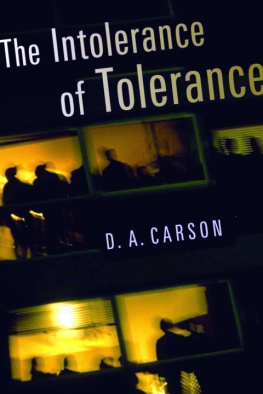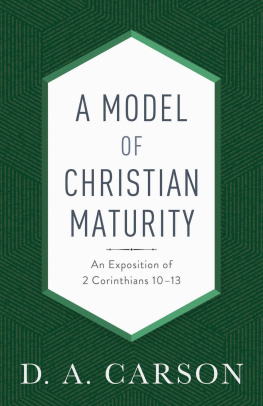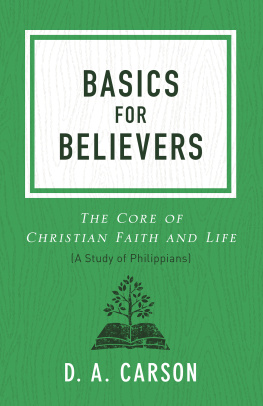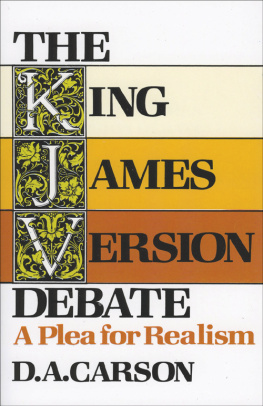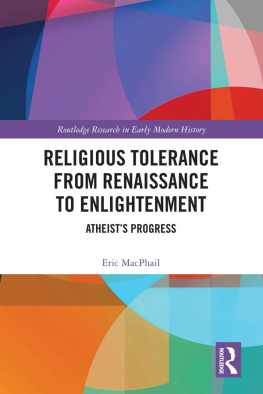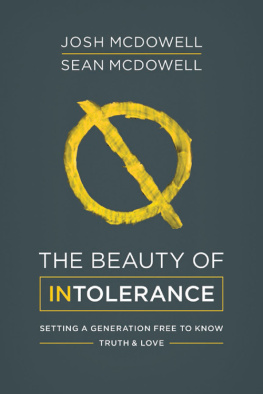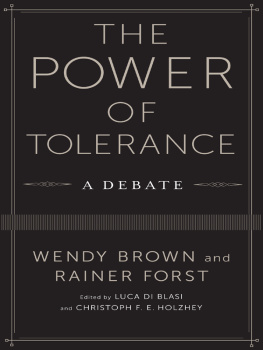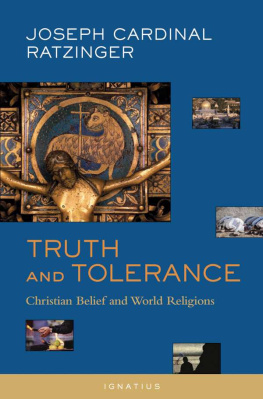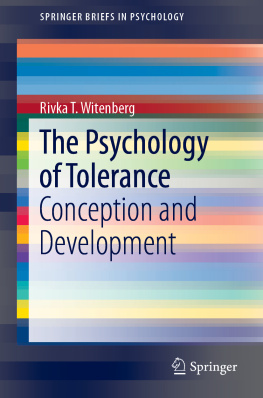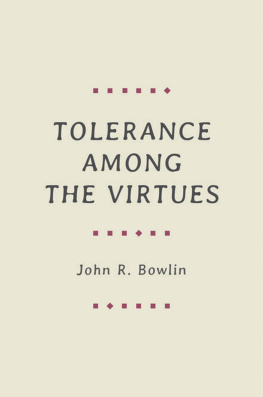D. A. CARSON





for Graham Cole with thanks for many stimulating conversations




Several times during the last ten years or so I have been invited to give a "public lecture" at one university or another. These invitations arise when a university has set aside a sum of money to pay for the travel expenses and honorarium of someone nominated by a recognized university student group to come and give an address on some topic of public interest. For example, the local physics club may bring in a notable theoretical physicist to give a public lecture on the latest developments in the world of quarks. My invitations have come when a recognized student Christian group has made application to these funds and their proposal has been accepted. The possible topics are extremely wide-ranging. It is usually understood that the lectures are not to be overtly religious. The numbers who attend may vary from a handful to many hundreds, depending almost entirely on either the interest generated by the topic or the reputation of the lecturer, or both.
When it has been my turn, I have three times announced as my title the title of this book, "The Intolerance of Tolerance." In each case the crowd that showed up was surprisingly large, and with a greater percentage of faculty attending than is usually the case. Believe me when I say that the reputation of the lecturer had nothing to do with the attendance: it was the topic alone that drew people. I ended each of these talks by stating my own convictions as a Christian and trying to show what bearing biblically faithful Christianity has on the sub ject. In each case I allowed time for Q & A; in each case these exchanges were vigorous, courteous, sometimes amusing, and certainly (from my perspective) enjoyable.
All of this is a roundabout way of mentioning one of the streams that brought me to write this book. These occasional lectures have kept me reading about and thinking through this topic, and it is high time I set some of this down in book form. It does not take much cultural awareness to see that the difficulties surrounding this subject are eating away at both Western Christianity and the fabric of Western culture. The challenges before us are not going to go away any time soon.
The second stream was my book Christ and Culture Revisited (also published by Eerdmans). That book provides more biblical reflection and theology, but it more or less covers the waterfront: I tried to think about culture in pretty broad terms. By contrast, the topic of this present book is much more narrowly focused. As I wrote the earlier one, however, I kept noting subtopics that cried out for more detailed unpacking - and none more so than tolerance/intolerance. What you now hold in your hand is the result. Perhaps I may be forgiven if from time to time I refer back to Christ and Culture Revisited to provide the underpinnings for some of my arguments here.
Once again I am grateful to Andy Naselli, my very able assistant, for making helpful suggestions and for compiling the indexes.

The plausibility structures that do remain, however, tend to be held with extra tenacity, almost as if people recognize that without such structures the culture will be in danger of flying apart. And tolerance, I am suggesting, is, in much of the Western world, part of this restricted but tenaciously held plausibility structure. To saunter into the public square and question it in some way or other not only is to tilt at windmills but is also culturally insensitive, lacking in good taste, boorish.
But I press on regardless, persuaded that the emperor has no clothes, or, at best, is sporting no more than Jockey shorts. The notion of tolerance is changing, and with the new definitions the shape of tolerance itself has changed. Although a few things can be said in favor of the newer definition, the sad reality is that this new, contemporary tolerance is intrinsically intolerant. It is blind to its own shortcomings because it erroneously thinks it holds the moral high ground; it cannot be questioned because it has become part of the West's plausibility structure. Worse, this new tolerance is socially dangerous and is certainly intellectually debilitating. Even the good that it wishes to achieve is better accomplished in other ways. Most of the rest of this chapter is devoted to unpacking and defending this thesis.
The Old Tolerance and the New
Let's begin with dictionaries. In the Oxford English Dictionary, the first meaning of the verb "to tolerate" is "To endure, sustain (pain or hardship)." That usage is becoming obsolete, but it still surfaces today when we say that a patient has a remarkable ability to tolerate pain. The second meaning: "To allow to exist or to be done or practised without authoritative interference or molestation; also gen. to allow, permit." Third: "To bear without repugnance; to allow intellectually, or in taste, sentiment, or principle; to put up with." Webster's Unabridged Dictionary is similar: "1. to allow; permit; not interfere with. 2. to recognize and respect (others' beliefs, practices, etc.) without necessarily agreeing or sympathizing. 3. to put up with; to bear; as, he tolerates his brother-in-law. 4. in medicine, to have tolerance for (a specified drug, etc.)." Even the computer-based dictionary Encarta includes in its list "ACCEPT EXISTENCE OF DIFFERENT VIEWS to recognize other people's right to have different beliefs or practices without an attempt to suppress them." So far so good: all these definitions are on the same page. When we turn to Encarta's treatment of the corresponding noun "tolerance," however, a subtle change appears: "1. ACCEPTANCE OF DIFFERENT VIEWS the accepting of the differing views of other people, e.g., in religious or political matters, and fairness toward the people who hold these different views."

